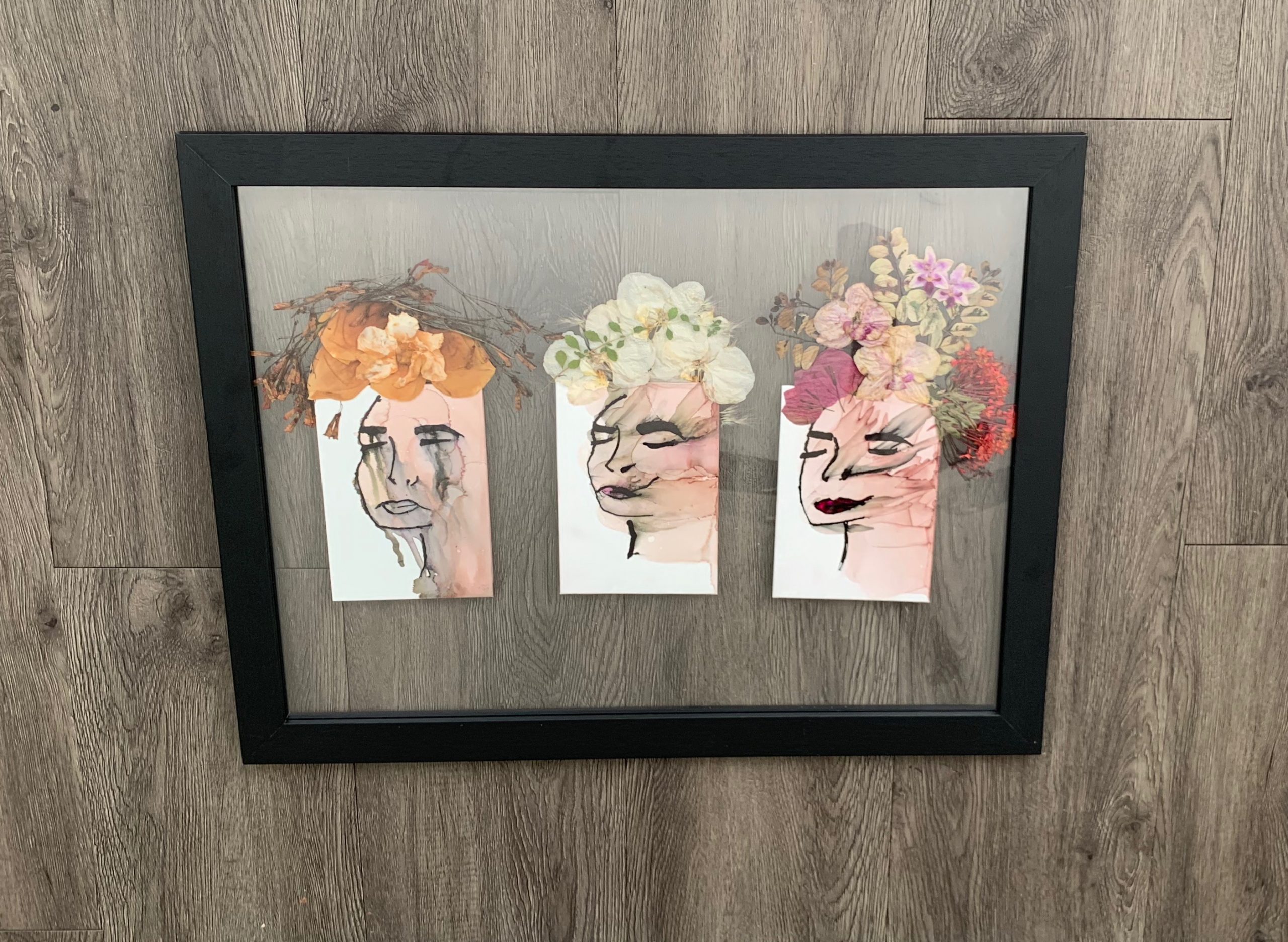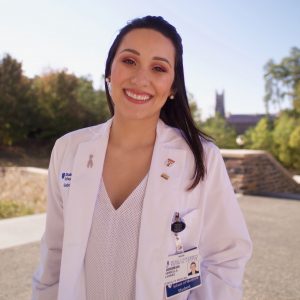Rebirth portrays the evolution of three emotional states that Greta (pseudonym), an African American woman, experienced following the heartbreaking and untimely loss of her child. The arc of emotions are embodied in three abstract alcohol ink paintings of Greta with accompanying dried and pressed flora. From left to right, the images show Greta enduring sorrow, numbness, and serenity. The clear frame allows the viewer to explore the piece against a multitude of backgrounds, and contrast the changing world against her persistent expressions, just as she had experienced. The flora add a living and vivid element to the piece as they reveal her mental complexion for each emotional phase. Greta’s eyes remain closed in all three iterations to reflect her deep meditation and her connection with her faith.
Sorrow: More than 30 years ago, Greta tragically lost her “baby girl” in a fatal car accident. Losing a child was agonizing for her. She experienced profound sadness and suffering for months after the incident with occasional surges of anger. Note the orientation of the ink running down the image in the first iteration, from left to right. I chose to incorporate aged flowers suspended at their brown, muted stage to represent her suffering from the death of her child. The flora drape around her face as a symbol of a mourning veil often seen at funerals.
Numbness: Eventually, Greta’s sorrow turned into numbness. She felt nothing for years: no longer sad, but unable to be happy. She knew she needed to move forward but found that difficult. Life passed, but her feeling of purposelessness lingered. In the middle image, her face was painted expressionless to make her emptiness apparent. The white floral crown symbolizes eternity and emphasizes the staying power of her numb state. The lone green vine is the strand of faith she held through it all.
Serenity: Blessed with another pregnancy, Greta began a new life with new perspectives. Her “gift from God,” another baby girl, was her “second chance,” and she endeavored to forgive those involved in the tragic accident to achieve inner peace. By forging forward, Greta rekindled her happiness, embarked to cherish all aspects of life, and – at last – attained serenity. The brush patterns on her face radiate from her subtle smile to symbolize her freedom. Recurring splashes of purple evoke her sense of peace. The ornate decoration of her mind, as represented by the diversity of flowers, reveals the true complexity of her life.
About the Artist: Gabriella Alvarez
I remember the first patient I helped fit a wig for at the Duke Cancer Center. Only thirty minutes earlier, she was given the news that she was diagnosed with cancer. I was scared of making her feel worse, as this was the first time I had to handle such a grave situation and she was in a delicate state. She expressed to me that her hair helped define her femininity and that she was afraid a wig would not do it justice. All the more, I wanted to find her the perfect wig that made her feel confident in her appearance. It took well over an hour, but the wig we decided on brought a smile to her face and made her hopeful for the future.
Personal appearance, as an agent of well-being, drives my interest in the medical humanities. I view personal appearance as an artform – a vessel for self-expression and a means to heal – and I partake in creating this artform every day in my most dearest hobby: makeup artistry. Through makeup, I am able to showcase my creativity and externalize my attitude for the day. I love to share my knowledge of makeup and see how it can improve the self-esteem and self-perception of those around me. This is why I chose to volunteer fitting wigs; I wanted to encourage others to see themselves in a positive light by fashioning their own outward style.
I chose to participate in SCOPES because I desired to tell the story of my patient through image rather than words. I believed that her and my individual experiences, as well as our shared experience during our time together would be most evident through an art piece. Participating in SCOPES allowed me to bring my creative capacity to the medical humanities, and tie in my penchant for beauty and transformation.


